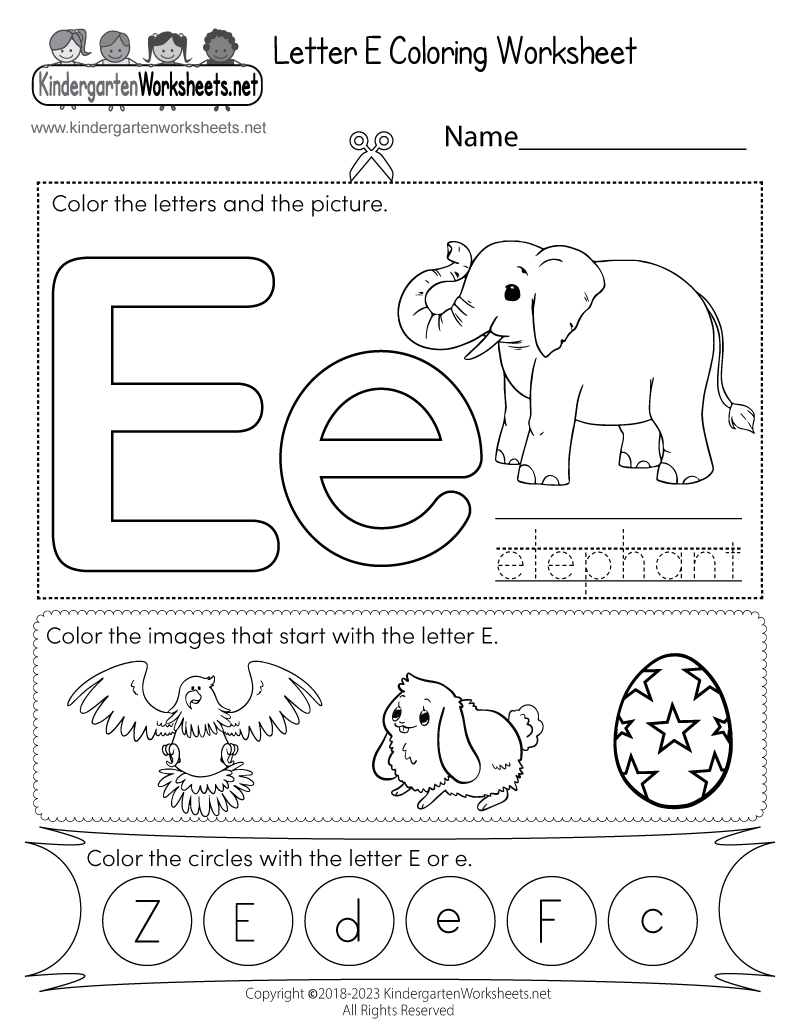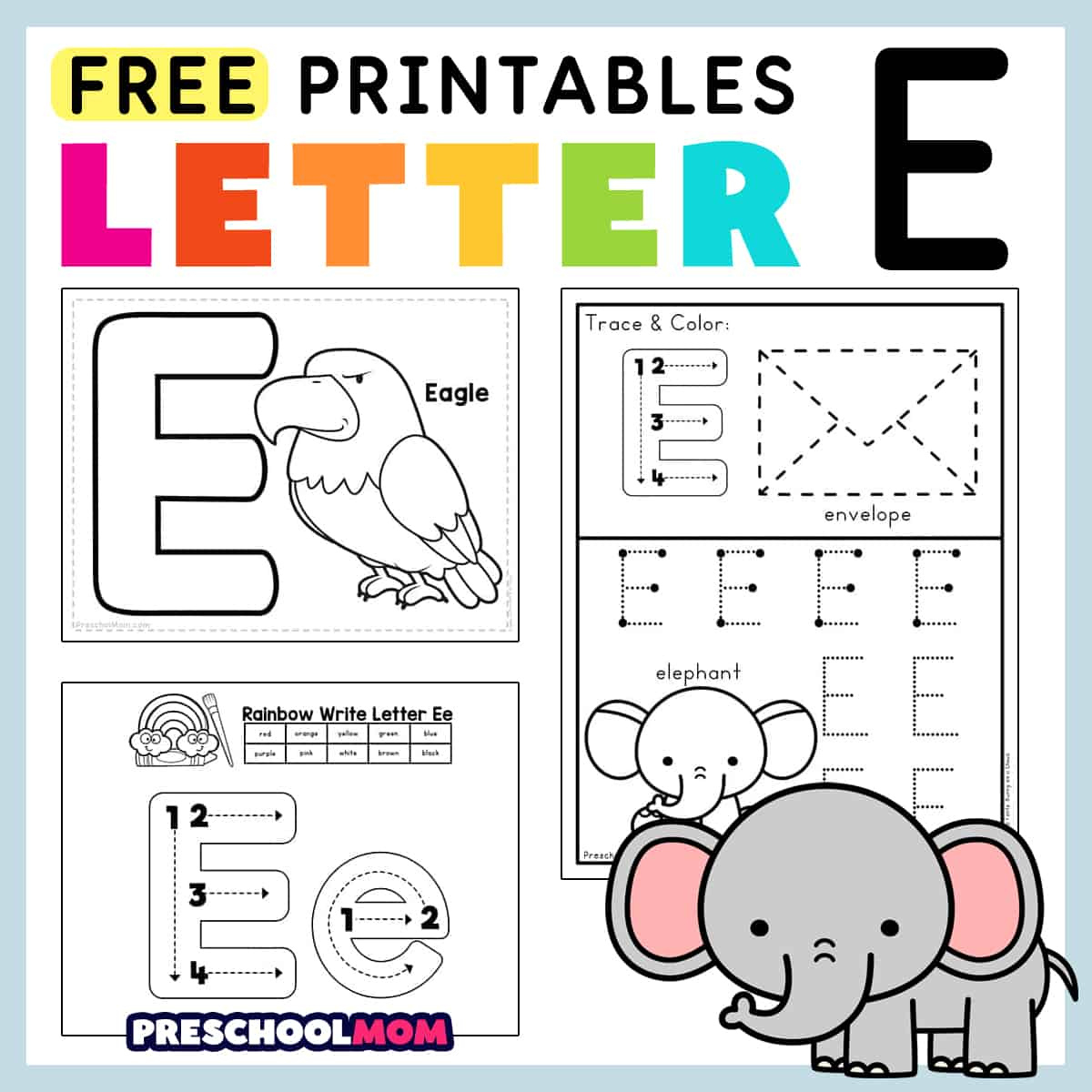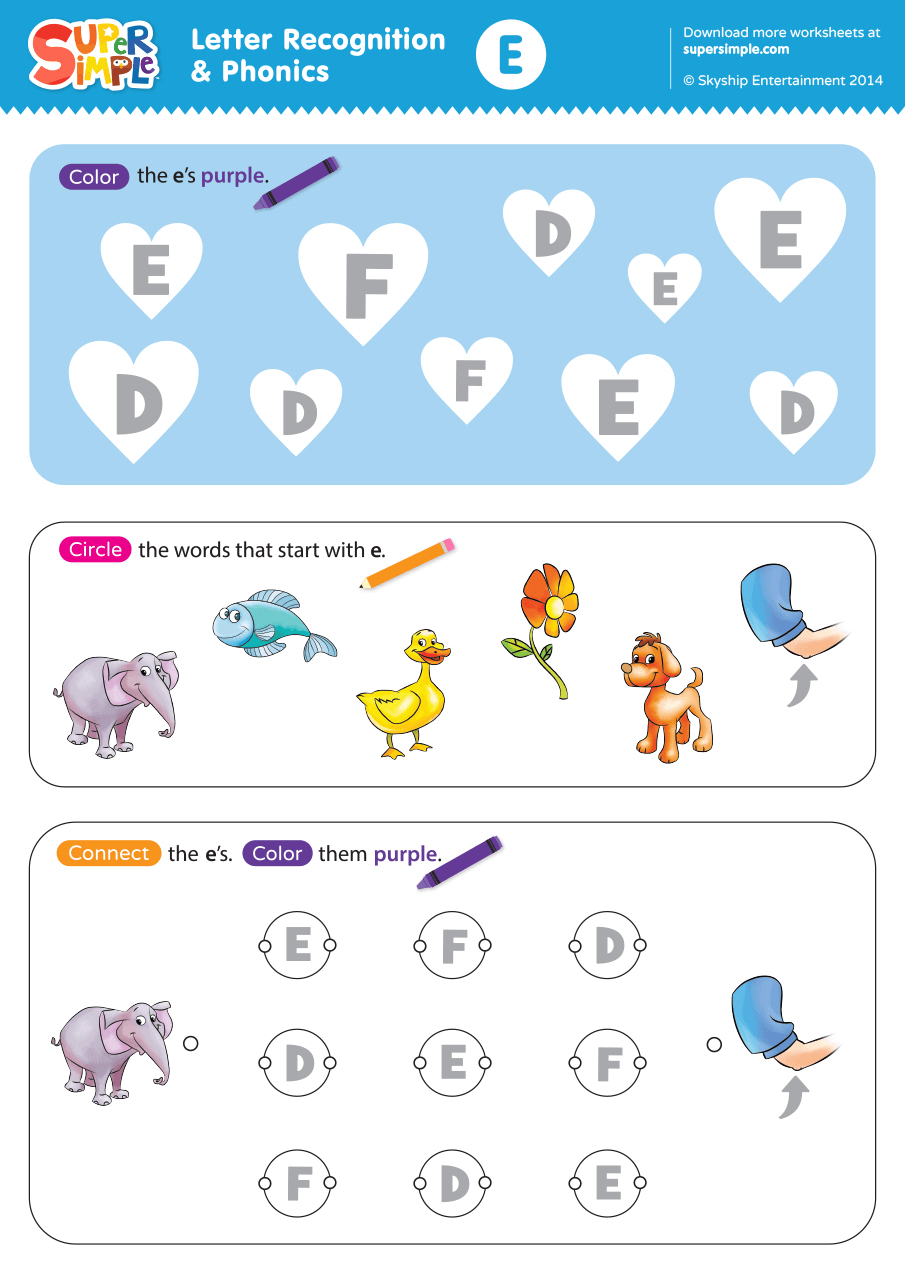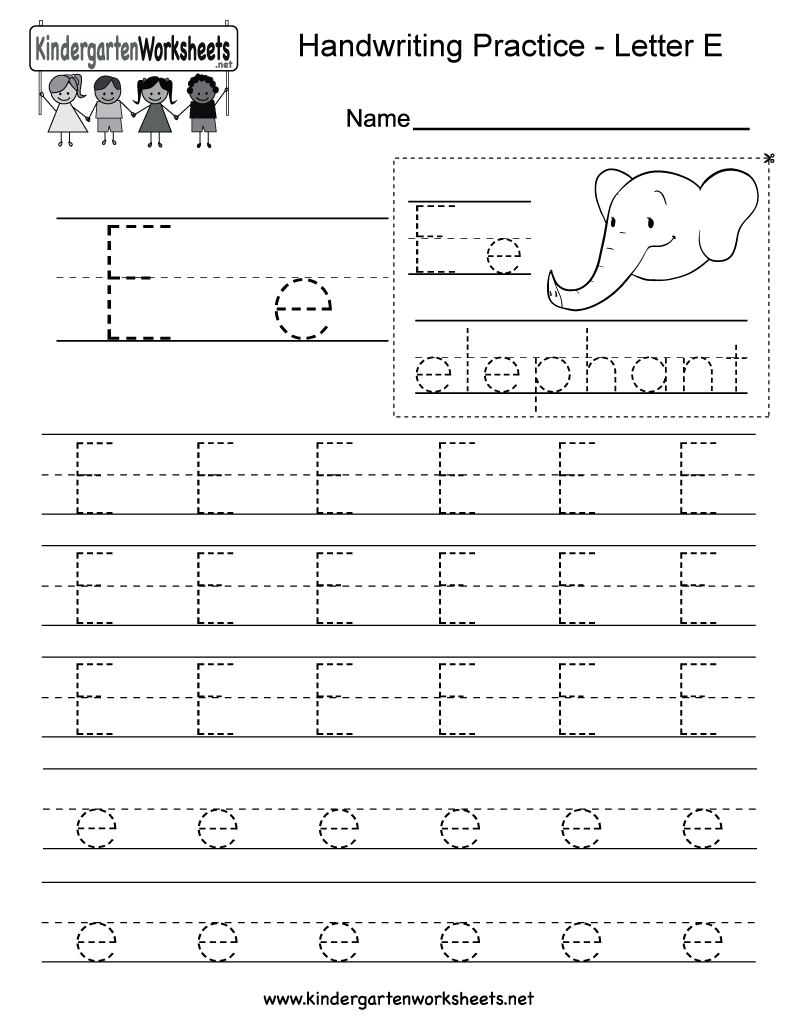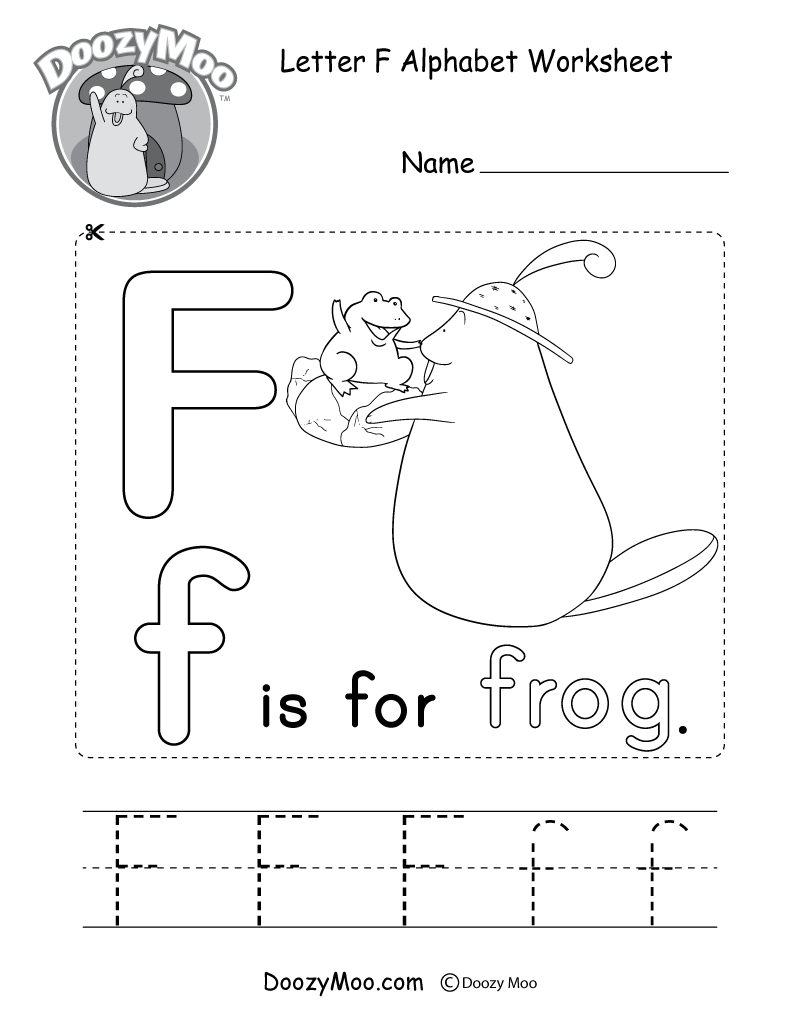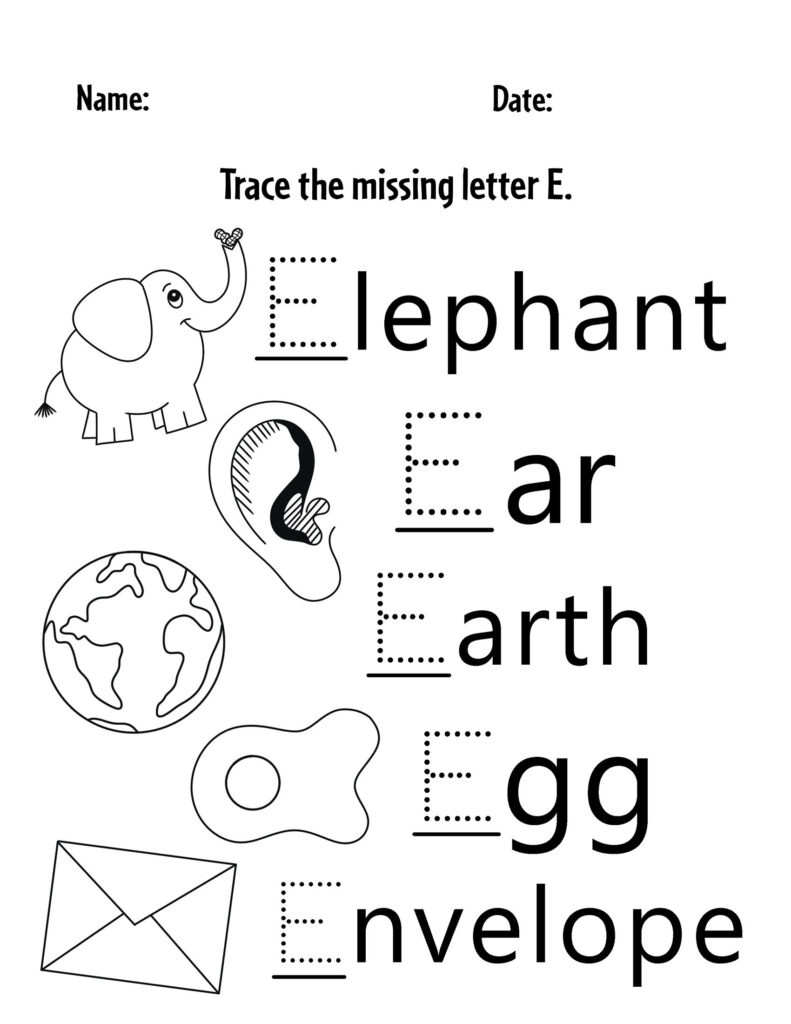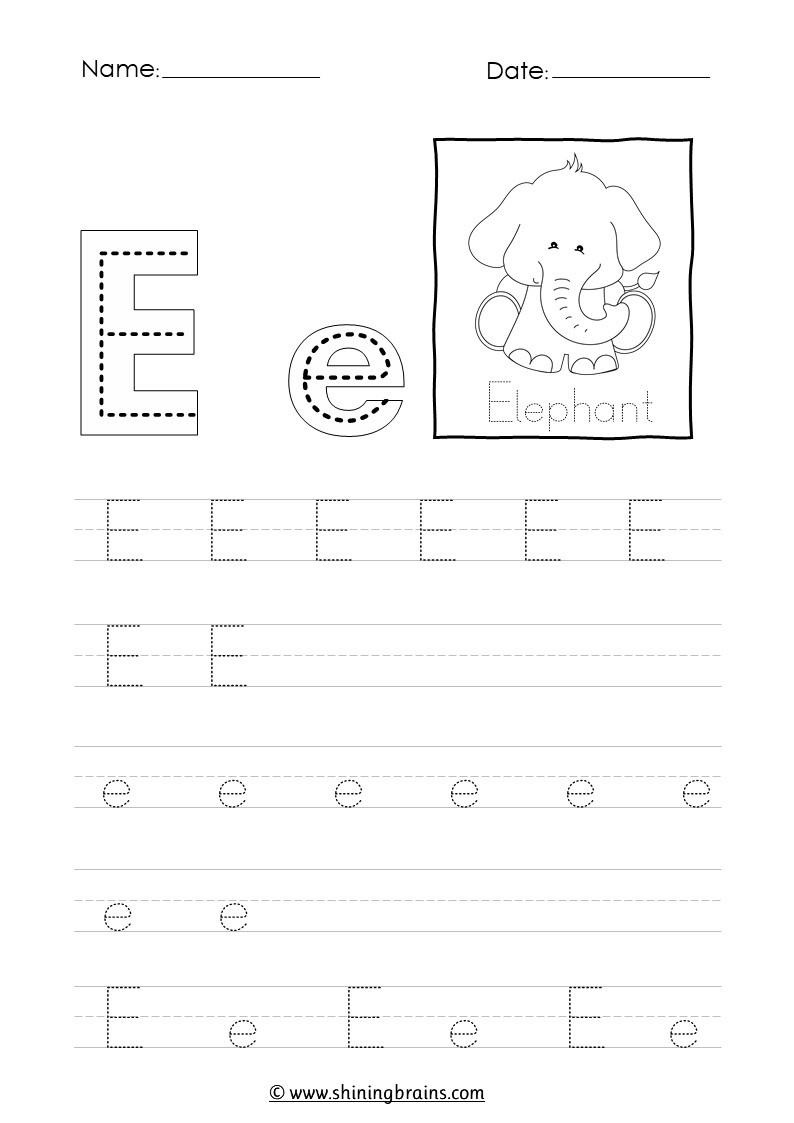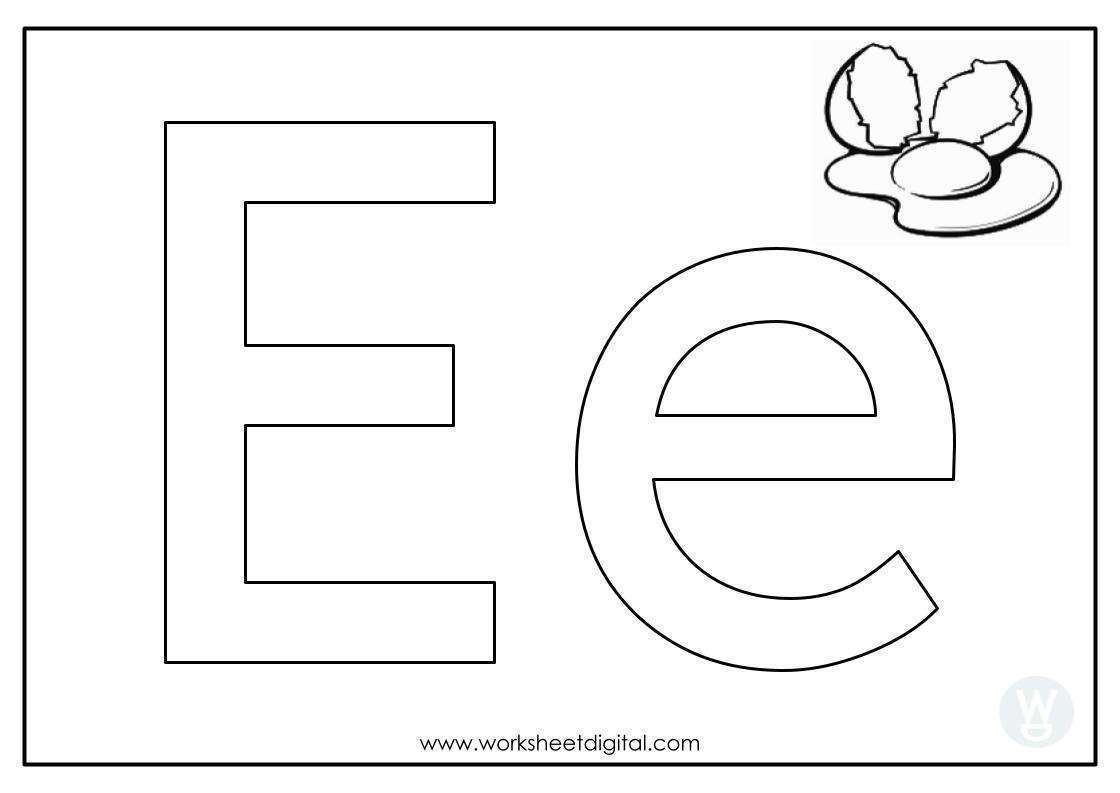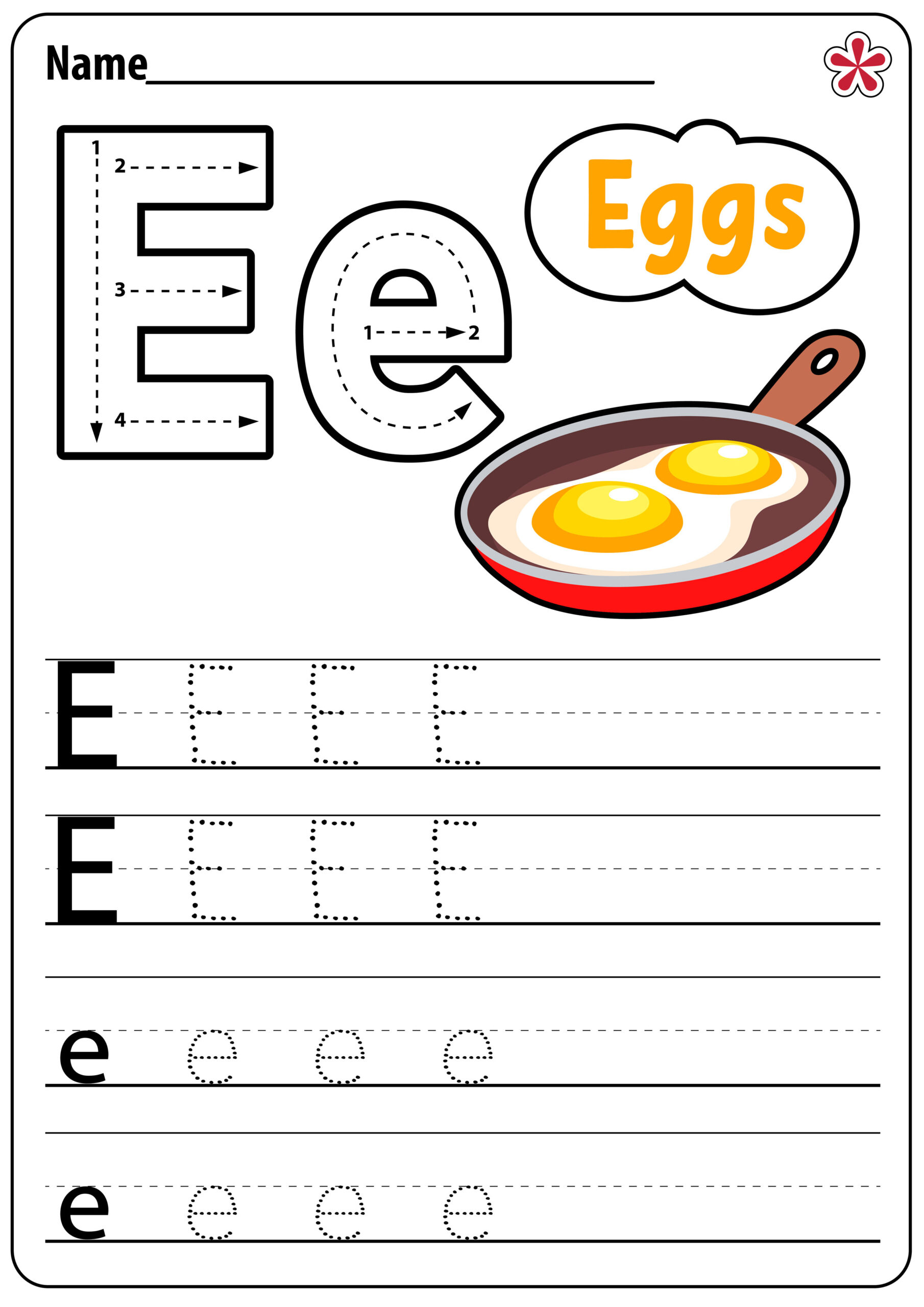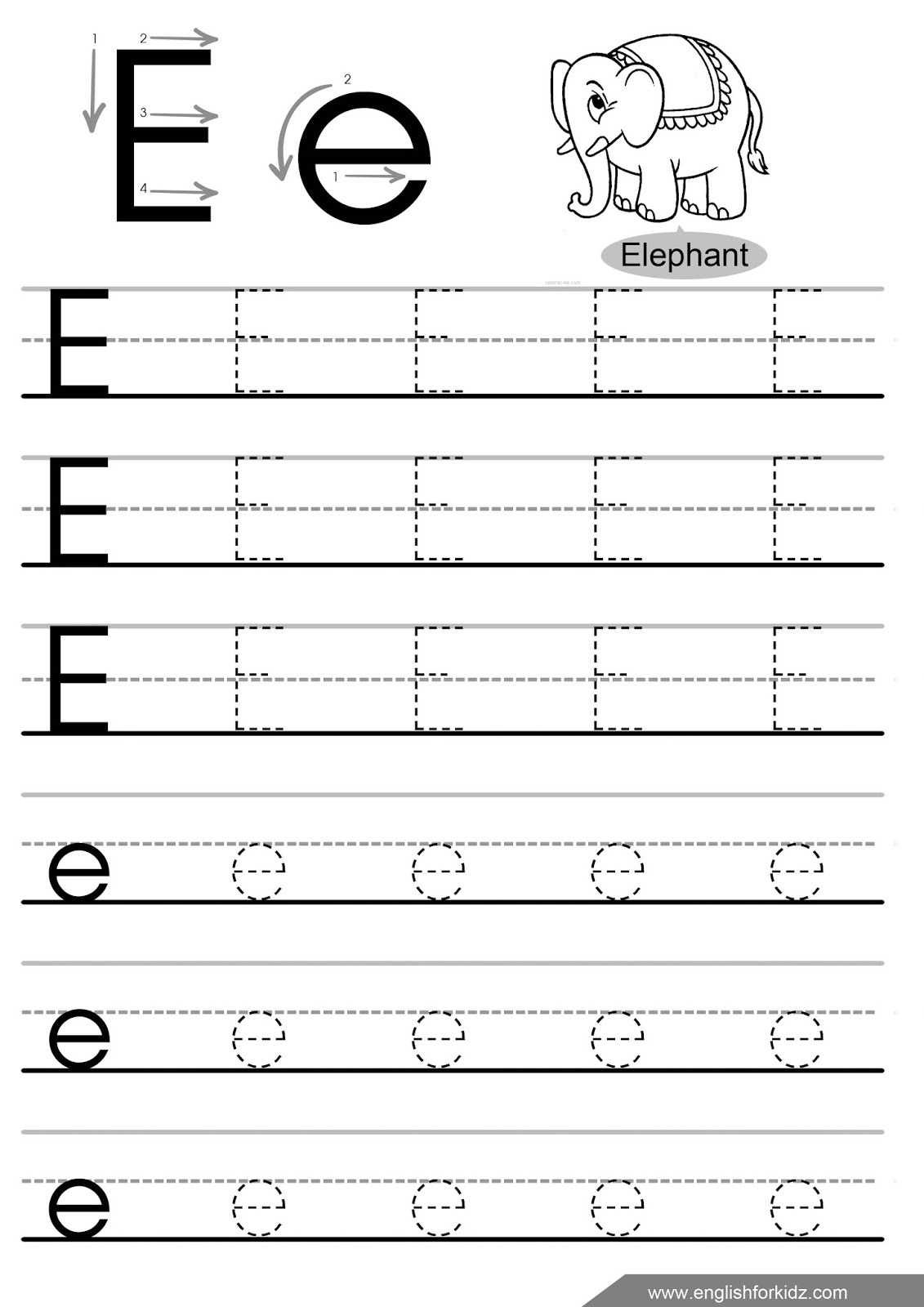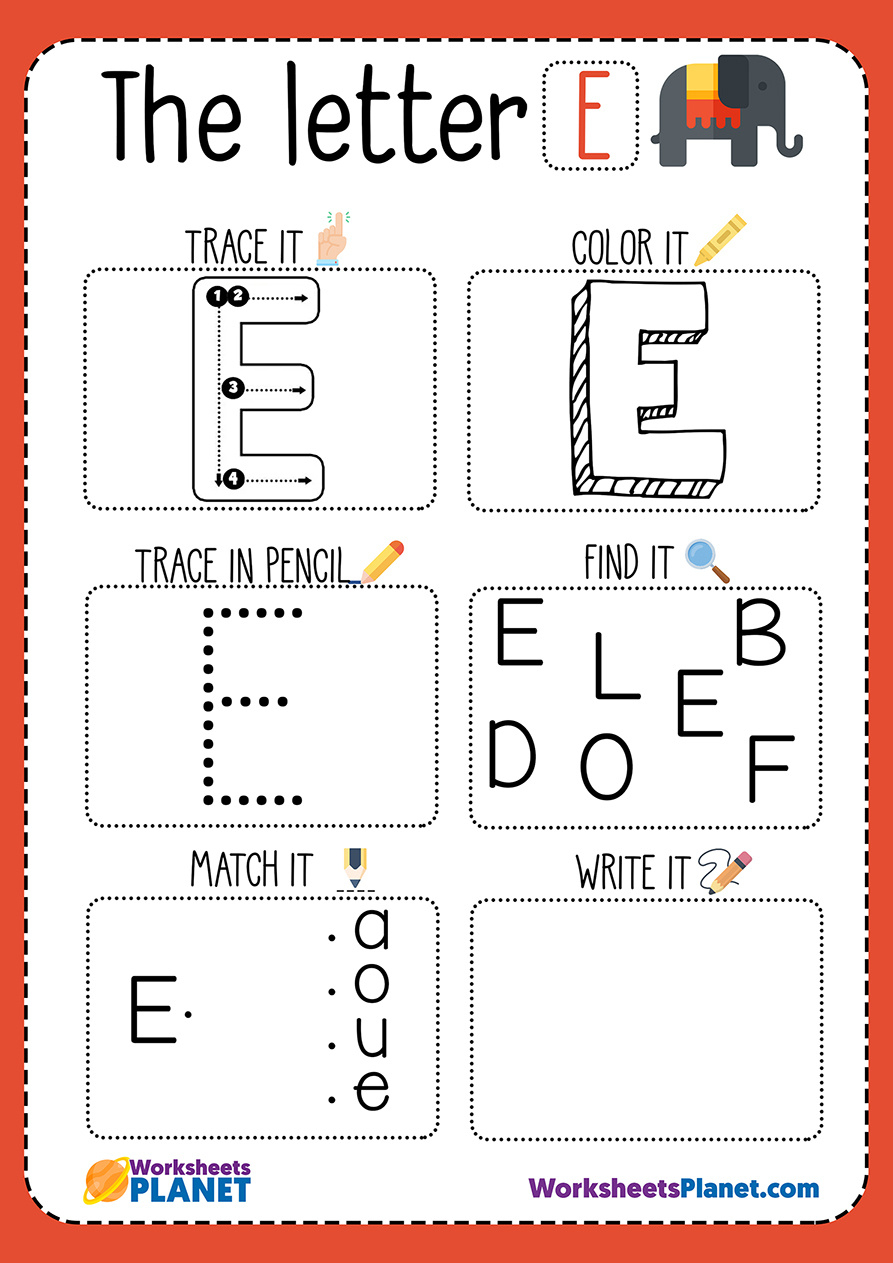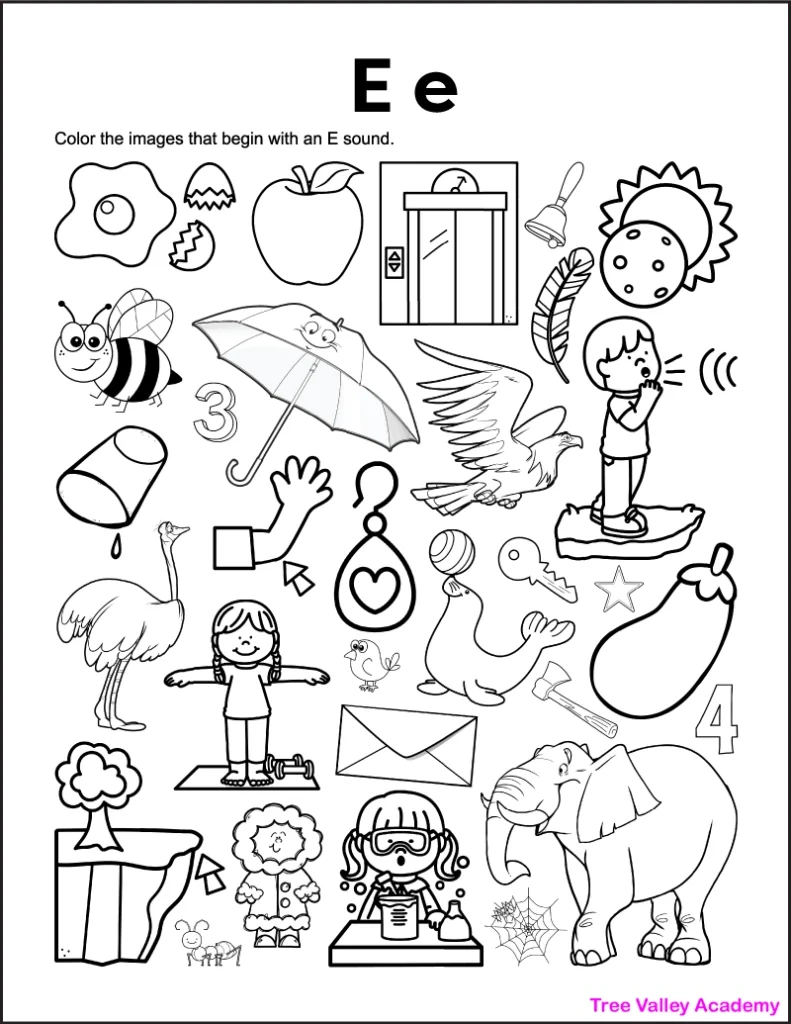Letter E Worksheets – Are you looking for a fun and engaging way to teach your child the fundamentals of the letter E? Letter E worksheets are an excellent resource for preschool and kindergarten students, offering a variety of activities to help them master this imperative letter. From tracing exercises to phonics games, these worksheets provide a comprehensive approach to learning. In this article, we’ll explore the different types of activities and exercises commonly found in Letter E worksheets, and how you can use them to support your child’s literacy development.
Letter E Worksheets Printable
Why Are Letter E Worksheets So Important for Your Child’s Literacy Development?
Before plunging into the world of Letter E worksheets, it’s necessary to understand their significance in your child’s educational journey.
Developing Early Literacy Skills
Importance of early literacy skills cannot be overstated. Mastering the alphabet, including the letter E, is a crucial step towards reading and writing proficiency. Letter E worksheets help your child develop these skills by introducing them to the shape, sound, and usage of the letter E in a fun and engaging way.
Building a Strong Foundation for Reading and Writing
An necessary aspect of literacy development is building a strong foundation for reading and writing. Letter E worksheets play a vital role in this process by providing your child with the opportunity to practice writing, tracing, and recognizing the letter E in various contexts.
Building on this foundation, Letter E worksheets also help your child develop phonemic awareness, recognize the relationship between sounds and letters, and understand the concept of uppercase and lowercase letters. This solid foundation will enable your child to decode words with confidence and read with fluency as they progress in their educational journey.
What Activities Can You Include in Letter E Worksheets for Preschool and Kindergarten Students?
Any educator or parent looking to create engaging and effective Letter E worksheets for preschool and kindergarten students should consider incorporating a variety of activities to cater to different learning styles.
What activities are commonly included in Letter E worksheets for preschool and kindergarten students?
Letter E worksheets typically include a mix of activities such as tracing exercises, phonics exercises, coloring and drawing activities, and interactive games or puzzles to help young learners develop their literacy skills.
Examples of Engaging Activities for Young Learners
Letter E worksheets can include activities such as identifying and circling uppercase and lowercase E’s, tracing the letter E with their finger or a pencil, and coloring pictures of objects that start with the letter E, such as an elephant or an egg.
This type of interactive and hands-on approach helps to capture the attention of young learners and makes learning the letter E a fun and enjoyable experience. By incorporating a range of activities, you can tailor your teaching approach to meet the individual needs of your students, whether they are visual, auditory, or kinesthetic learners.
How Can You Help Children Differentiate Between Uppercase and Lowercase E?
There’s no denying that uppercase and lowercase letters can be confusing for young learners, especially when it comes to the letter E. This is where Letter E worksheets come in, providing a valuable resource for helping children develop this vital skill.
How do Letter E worksheets help children differentiate between uppercase and lowercase E?
One of the primary ways Letter E worksheets assist in differentiation is by providing visual cues and repetition. By repeatedly exposing children to both uppercase and lowercase E’s in various contexts, they begin to recognize and understand the differences between the two.
Tips for Effective Differentiation Strategies
Worksheets that incorporate a variety of activities, such as tracing exercises, phonics exercises, and coloring activities, can help you create an engaging and effective differentiation strategy. The key is to make learning fun and interactive, while also providing opportunities for children to practice and reinforce their understanding of the letter E.
- Use visual aids to highlight the differences between uppercase and lowercase E’s.
- Incorporate games and puzzles that require children to identify and match uppercase and lowercase E’s.
- Provide opportunities for children to practice writing and tracing both uppercase and lowercase E’s.
Children need to develop a strong foundation in letter recognition and differentiation to build their reading and writing skills. By using Letter E worksheets that incorporate a range of activities and exercises, you can help your child or student develop this vital skill in a fun and engaging way. The key is to make learning interactive and enjoyable, while also providing opportunities for practice and reinforcement.
How Can Tracing Exercises Improve Your Child’s Writing Skills?
Despite the abundance of digital tools available, traditional tracing exercises remain an important component of Letter E worksheets. These exercises play a crucial role in developing your child’s writing skills, hand-eye coordination, and fine motor skills.
What types of tracing exercises are found in Letter E worksheets to improve writing skills?
Tracing exercises in Letter E worksheets typically include:
- Uppercase E tracing: Tracing the uppercase letter E helps your child develop the correct letter formation and size.
- Lowercase e tracing: Tracing the lowercase letter e helps your child understand the differences between uppercase and lowercase letters.
- Letter E word tracing: Tracing words that start with the letter E, such as “elephant” or “egg,” helps your child develop their writing skills in context.
- Arrow tracing: Tracing arrows and lines helps your child develop their fine motor skills and hand-eye coordination.
- Shape tracing: Tracing shapes, such as circles or squares, helps your child develop their spatial awareness and fine motor skills.
Recognizing the importance of tracing exercises, Letter E worksheets often incorporate a variety of activities to engage your child and improve their writing skills.
| Tracing Exercise | Skill Developed |
| Uppercase E tracing | Letter formation and size |
| Lowercase e tracing | Differentiation between uppercase and lowercase letters |
| Letter E word tracing | Writing skills in context |
| Arrow tracing | Fine motor skills and hand-eye coordination |
The Benefits of Tracing Exercises for Hand-Eye Coordination and Fine Motor Skills
Writing skills are closely linked to hand-eye coordination and fine motor skills. Tracing exercises in Letter E worksheets help develop these important skills, enabling your child to write more confidently and accurately.
Worksheets that incorporate tracing exercises help your child develop their hand-eye coordination by requiring them to coordinate their hand movements with their visual attention. This skill is critical for writing, as it enables your child to accurately form letters and words. Additionally, tracing exercises help strengthen your child’s fine motor skills, allowing them to grasp and manipulate writing tools with precision. By developing these skills, tracing exercises lay the foundation for more advanced writing skills, such as writing sentences and paragraphs.
How Can Phonics Exercises Enhance Sound Recognition in Letter E Worksheets?
For effective sound recognition, phonics exercises play a crucial role in Letter E worksheets. These exercises help your child develop phonemic awareness, which is the ability to identify and manipulate individual sounds within words.
How can Letter E worksheets incorporate phonics exercises to enhance sound recognition?
Recognizing the distinct sound of the letter E is necessary for reading and spelling skills. By incorporating phonics exercises, Letter E worksheets can help your child recognize the sound of E in different words, such as “pet” and “meet”.
Examples of Phonics Exercises for Letter E
Phonics exercises for the letter E can include activities such as identifying words that start with the “e” sound, such as “egg” and “elephant”, and distinguishing between words that have the “e” sound at the beginning or end, like “pet” and “tame”.
This type of exercise helps your child develop a strong foundation in phonics, which is necessary for reading and spelling skills. By practicing phonics exercises regularly, your child will become more confident in their ability to recognize the sound of the letter E in different words, leading to better reading comprehension and improved spelling skills. Additionally, phonics exercises can be made fun and engaging through the use of interactive games and puzzles, making learning a enjoyable experience for your child.
What Engaging Activities Can You Incorporate into Letter E Worksheets?
To make learning more enjoyable and interactive, it’s vital to incorporate engaging activities into your Letter E worksheets.
What are some engaging coloring and drawing activities centered around the letter E?
Exciting coloring and drawing activities centered around the letter E can help your child develop their fine motor skills and creativity. For instance, you can include pictures of elephants, eggs, or earthworms for your child to color and label.
The Importance of Creativity in Early Childhood Education
Creative play is a vital aspect of early childhood education, as it allows children to express themselves and develop their problem-solving skills. By incorporating creative activities into your Letter E worksheets, you can help your child think outside the box and develop a stronger connection to the letter.
Activities that promote creativity, such as drawing and coloring, can have a positive impact on your child’s cognitive development. These activities can help improve their fine motor skills, hand-eye coordination, and problem-solving abilities. Moreover, creative play can help reduce stress and anxiety in young children, creating a more conducive learning environment.
How Can You Expand Your Child’s Vocabulary with Words that Start with E?
Many parents and educators recognize the importance of building a strong foundation in literacy skills from an early age. One effective way to do this is by incorporating Letter E worksheets into your child’s learning routine.
How do Letter E worksheets contribute to expanding a child’s vocabulary with words that start with E?
With Letter E worksheets, you can introduce your child to a wide range of words that start with the letter E, helping them to develop a deeper understanding of the relationship between sounds and letters. This, in turn, can significantly enhance their vocabulary and improve their overall reading and writing skills.
Examples of Words that Start with E for Vocabulary Building
Words like “elephant”, “egg”, and “earth” are all great examples of vocabulary-building words that start with the letter E. These words can help your child develop a stronger connection between the letter E and its associated sounds.
Another benefit of using Letter E worksheets to build vocabulary is that they can help your child develop a stronger understanding of word meanings and contexts. For example, you can use words like “escape” and “exciting” to teach your child about more complex concepts like emotions and actions. By incorporating these types of words into their learning routine, you can help your child develop a more nuanced understanding of language and improve their overall communication skills.
How Can You Make Learning the Letter E Engaging and Fun?
Unlike traditional worksheets that focus solely on repetition and memorization, incorporating interactive games and puzzles can make learning the letter E a enjoyable experience for young children.
What interactive games or puzzles can be included in Letter E worksheets to make learning fun?
Any interactive activity that encourages children to think creatively and engage with the letter E can be included in worksheets. Examples include word searches, crossword puzzles, and mazes that feature the letter E, as well as matching games that require children to identify uppercase and lowercase E’s.
The Benefits of Interactive Learning for Young Children
On top of making learning more enjoyable, interactive games and puzzles have been shown to have a range of benefits for young children.
Learning through interactive games and puzzles can improve cognitive skills, such as problem-solving and critical thinking, while also boosting confidence and motivation. Additionally, interactive learning can help children develop vital social skills, such as communication and collaboration, as they work together to solve puzzles and complete games. By incorporating interactive games and puzzles into Letter E worksheets, you can create a more engaging and effective learning experience for your child.
How Can You Effectively Use Letter E Worksheets at Home?
Now that you have a collection of Letter E worksheets, it’s imperative to know how to utilize them effectively at home to support your child’s literacy development.
How Can Parents Effectively Use Letter E Worksheets at Home to Support Their Child’s Literacy Development?
Their consistent use can significantly enhance your child’s understanding of the letter E, its sound, and its application in words.
Tips for Parents to Encourage Learning at Home
Support your child’s learning journey with these tips:
- Make it fun: Incorporate games, puzzles, and activities that make learning the letter E an enjoyable experience.
- Be consistent: Establish a regular routine for practicing Letter E worksheets to reinforce new skills.
- Provide positive reinforcement: Praise your child’s efforts and accomplishments to boost their confidence.
Recognizing the importance of parental involvement, you can play a vital role in fostering your child’s literacy skills.
Childs early learning experiences lay the foundation for future academic success. By incorporating Letter E worksheets into their daily routine, you can:
- Develop phonemic awareness: Help your child recognize the sound of the letter E and its association with words.
- Enhance writing skills: Practice tracing exercises to improve handwriting and fine motor skills.
- Build vocabulary: Introduce new words that start with the letter E, expanding your child’s language skills.
Recognizing the value of early literacy development, you can empower your child with imperative skills for future academic success.
How Can You Effectively Integrate Letter E Worksheets into the Classroom Curriculum?
All educators strive to create an engaging and comprehensive learning environment for their students. In the context of teaching the alphabet, incorporating Letter E worksheets can be a valuable tool to support young learners.
What strategies can teachers use to integrate Letter E worksheets into their classroom curriculum?
For seamless integration, you can start by identifying the learning objectives and outcomes you want to achieve with your Letter E worksheets. This will help you align them with your existing curriculum and ensure a cohesive learning experience.
Examples of Effective Integration Strategies
Letter E worksheets can be easily incorporated into various classroom activities, such as phonics lessons, reading exercises, and writing practice.
Integrating Letter E worksheets into your lesson plans can have a significant impact on your students’ learning outcomes. For instance, you can use them to reinforce phonics skills, improve handwriting, and enhance vocabulary. By incorporating these worksheets into your daily lessons, you can create a fun and engaging learning environment that fosters a love for learning in your students.
How Do Letter E Worksheets Support Early Reading Skills?
Not all children develop reading skills at the same pace, but with the right tools and support, you can help your child build a strong foundation for future academic success.
How do Letter E worksheets support the development of early reading skills in young children?
Deliberate practice with Letter E worksheets helps young children develop necessary skills, such as recognizing and writing the letter, understanding its sound and usage, and building vocabulary with words that start with E. These skills are crucial for laying the groundwork for future reading proficiency.
The Importance of Early Reading Skills for Future Academic Success
Skills acquired in the early years, such as phonemic awareness, decoding, and comprehension, have a direct impact on future academic performance. Children who struggle with reading in the early years may experience difficulties in other subjects, including writing, science, and social studies.
Success in reading is closely tied to overall academic achievement. Research shows that children who are proficient readers by the end of third grade are more likely to graduate from high school and pursue higher education. By supporting your child’s early reading development with Letter E worksheets and other resources, you can set them up for long-term success.
What Challenges Will You Face When Using Letter E Worksheets, and How Can You Overcome Them?
After incorporating Letter E worksheets into your teaching or homeschooling routine, you may encounter some common challenges that can hinder their effectiveness.
Overcoming Common Challenges when Using Letter E Worksheets
Any struggle to keep students engaged or motivated can lead to frustration and decreased learning outcomes. For instance, if worksheets are too repetitive or boring, students may lose interest and fail to develop a strong foundation in letter recognition and writing skills.
Solutions for Effective Implementation
For successful integration of Letter E worksheets, it’s important to tailor them to your students’ learning styles and abilities. This can be achieved by incorporating a variety of activities, such as tracing exercises, phonics games, and interactive puzzles.
This approach not only caters to different learning styles but also prevents boredom and increases engagement. Additionally, by providing opportunities for students to practice writing and recognizing the letter E in different contexts, you can help them develop a deeper understanding of its sound and usage. By doing so, you’ll be well on your way to creating a strong foundation for future reading and writing skills.
What Have You Learned About Letter E Worksheets?
Following this exploration of Letter E worksheets, you now have a comprehensive understanding of the various activities and exercises that can help preschool and kindergarten students develop their literacy skills. You’ve discovered how these worksheets can aid in differentiating between uppercase and lowercase E, improving writing skills through tracing exercises, and enhancing sound recognition through phonics exercises. With this knowledge, you’re equipped to support your child’s literacy development at home or integrate these worksheets into your classroom curriculum.
